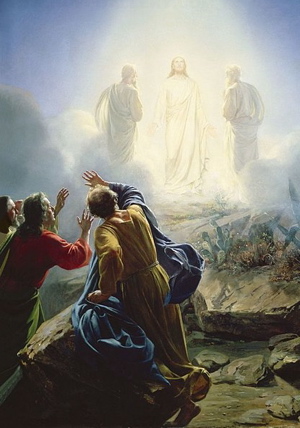MONDAY, AUGUST 6: An event shrouded in mystery and revered by St. Thomas Aquinas as “the greatest miracle” is recalled by both Eastern and Western Christians today, on the Feast of the Transfiguration of Our Lord. (Note: Catholic and most Orthodox churches mark this feast on August 6, though many American Protestant congregations, among them United Methodist and some Lutheran churches, celebrated Jesus’s transfiguration much earlier this year as part of their Epiphany season.)
Three Gospels tell of Jesus taking three disciples—Peter, James and John—along with him on an ascent of a mountain. Once at their destination, the prophets Elijah and Moses appear. A voice in the clouds says, “This is my beloved Son, with whom I am well pleased; listen to Him.” The disciples fall to their knees in wonder.
While heading back down the mountain, the Bible describes Jesus as telling his disciples not to speak of what they had seen until he has risen from the dead. The disciples—confused by the words, “risen from the dead”—discuss the meaning of this puzzling experience.
Theologians have argued for centuries about the metaphysics of the transfiguration—whether his garments became white and his face shone like the sun, or perhaps the apostles’ senses were transfigured so that they could perceive the true glory of God. Nonetheless, Christian churches agree that the transfiguration took place on Mount Tabor. The mountain represents the meeting point of human and God; of earth and heaven.
For an Orthodox perspective on the holiday, learn more from the Greek Orthodox Archdiocese of America.
For a Western perspective, visit the Global Catholic Network.
